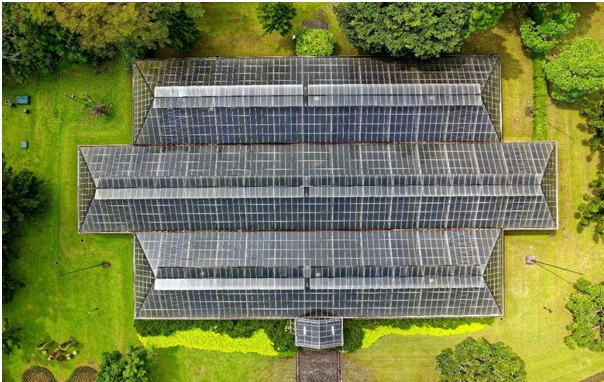
On-Grid Solar Power System- How do they connect to the electricity grid?
This article will show you how an installation connected to the power grid, or an on grid installation, works clearly. Connected to the electricity grid, it also generates its solar energy with the help of solar panels. When the electricity bill comes in after a short time, you can see how much money you save right away.
What is a Grid-Connected Facility?
Businesses and homes that have links to the network share infrastructures, have some connection to the traditional electricity network. The main goal of this type of self-consumption is to cut your electricity bill as much as possible while still making electricity for your home in a clean and long-term way.
As long as the sun is out, the solar panels generate all the electricity needed by the photovoltaic solar system. It means that all of the equipment can run at full capacity during this kind of self-consumption. As soon as the sun sets, the solar panels won’t work, and the conventional electrical network will take over. To save on your electricity bill, we suggest that you stay at a different rate for each hour.
The most important benefit of using solar panels to make electricity during the day is saving money. Batteries, which are the most expensive part of a photovoltaic system, will not have to be bought because of this arrangement. We will also have electricity all the time, whether from solar panels or the power grid.
Important Elements of an On Grid Network
A photovoltaic solar system that connects to the grid has a lot of different parts:
1. A Solar Device
Solar panels are in charge of taking in solar radiation and turning it into the most efficient electricity for your home. This way, we will ensure that all electrical equipment has enough power to work properly. We should get more energy from solar panels of the same power if there is more radiation and more time for them to get to the sun. Before you buy solar panels, there are many things to think about. These include how much radiation they get, their location, their angle and inclination, and other factors.
We can categorize solar systems in various ways. The most common is to separate them based on their main composition, either poly-crystalline or mono-crystalline.
2. Solar Inverter
It is the most important part of the solar system. It helps convert direct current into alternating current so that the home can use electricity. These inverters work with an electrical network, and they come in single-phase and three-phase configurations.
We can separate grid-connected inverters into two groups: those that work with batteries and those that don’t. But, on the other hand, hybrid network inverters let us become more self-sufficient. They do so by giving the batteries energy that they did not use during solar production hours at night or when there is not enough solar radiation. This way, they can be more self-sufficient.
3. Wattmeter
We use a wattmeter to determine how much energy we require in an electrical installation. It is a piece of calibrated measuring equipment that does this. It tells the inverter how much energy the system needs, and it also tells the inverter how much energy the system doesn’t need.
If the wattmeter shows the necessary electrical requirements, it must be close to connected wires. Unfortunately, we sometimes use wattmeters in big places with many wires, so some wattmeters have sensors that don’t directly measure the power use.
Off-Grid Solar Kits- Benefits!
The term “off the grid” means that you don’t use public utilities or resources. Instead, they get their electricity from wind and solar power on homesteads that aren’t connected to the electricity grid. Likewise, an off-grid building means that it has no connection to any service and that all of the energy the building needs comes from inside itself.
How does one go about living off the grid in a city?
In other words, living off the grid means that you are self-sufficient and don’t need to get your energy from a company. Instead, you can use a solar power system to do this. This system comprises photovoltaic panels that capture and convert solar energy into electricity and batteries that store this energy when the sun isn’t shining.
To live off the grid, you’ll need to buy a solar kit with a battery that can catch the sun’s energy, turn it into electricity, and store any extra energy. As soon as the system is up on your roof or balcony, you won’t have to worry about changing market prices. You’ll be able to start saving money on your electricity bills in the long run because of it.
Advantages of Off-Grid Solar Kits
1. Because the grid is like a battery, an off-grid solar system is a great choice!
In many ways, the electric grid is like a battery, except that it doesn’t need to be maintained or replaced and has much better efficiency rates. Unfortunately, battery systems used in most homes and businesses waste more electricity than they should.
2. Anyone can set them up!
Because solar panels are very good at producing electricity in low and diffused light, they are ideal for rooftops that aren’t facing the sun.
3. Much safer!
As a result, there are no PIDs or hot spots on the solar module, making it more fire-resistant and reducing the risk of power outages. It makes it possible to build the best solar system.





